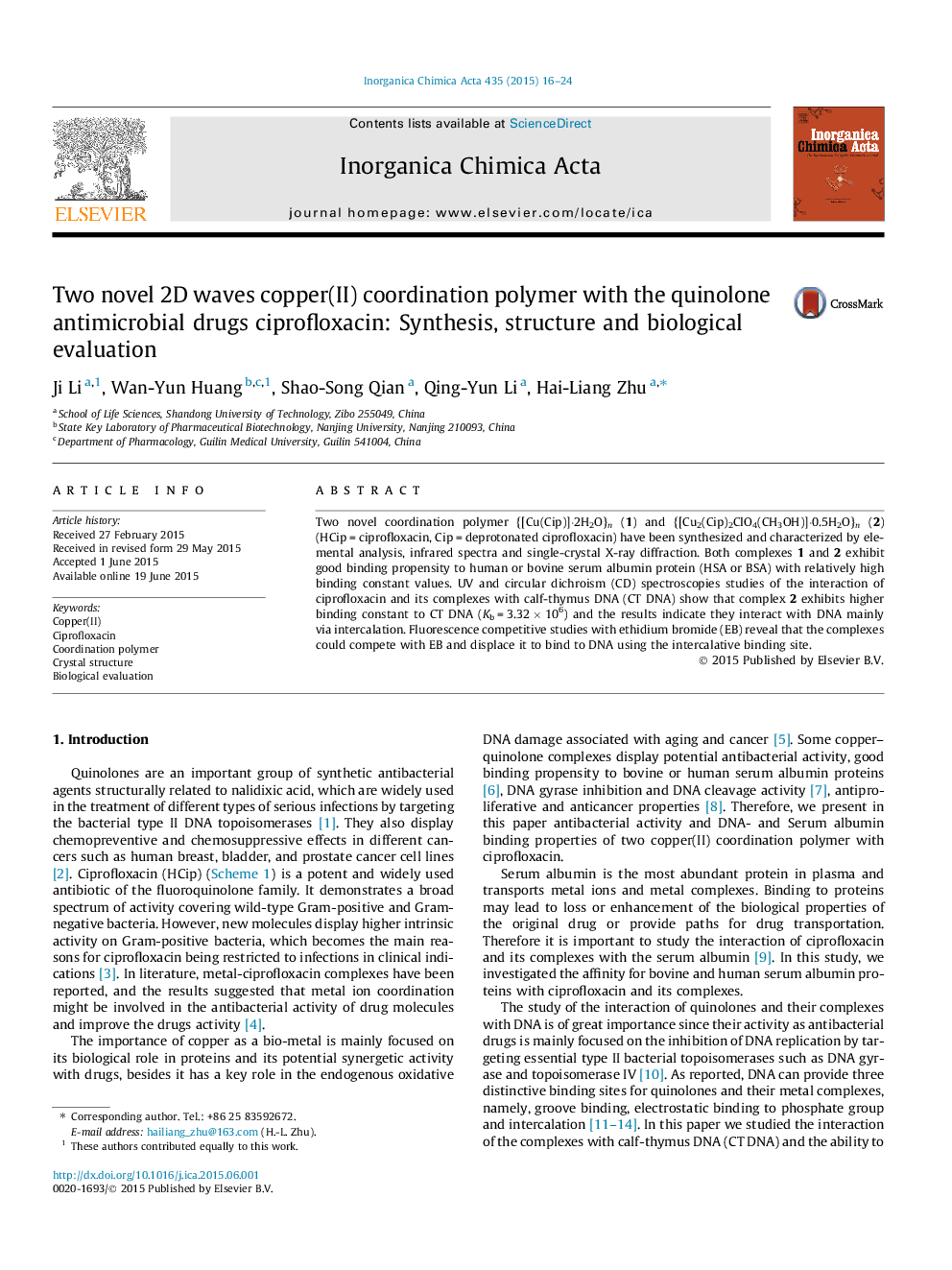| Article ID | Journal | Published Year | Pages | File Type |
|---|---|---|---|---|
| 1308934 | Inorganica Chimica Acta | 2015 | 9 Pages |
•Cu(II) complexes with ciprofloxacin were synthesized and characterized.•Albumin can be a vehicle of transport of these complexes in the blood serum.•These complexes can interact with DNA.•The two complexes have better biological evaluation than ciprofloxacin.
Two novel coordination polymer {[Cu(Cip)]·2H2O}n (1) and {[Cu2(Cip)2ClO4(CH3OH)]·0.5H2O}n (2) (HCip = ciprofloxacin, Cip = deprotonated ciprofloxacin) have been synthesized and characterized by elemental analysis, infrared spectra and single-crystal X-ray diffraction. Both complexes 1 and 2 exhibit good binding propensity to human or bovine serum albumin protein (HSA or BSA) with relatively high binding constant values. UV and circular dichroism (CD) spectroscopies studies of the interaction of ciprofloxacin and its complexes with calf-thymus DNA (CT DNA) show that complex 2 exhibits higher binding constant to CT DNA (Kb = 3.32 × 106) and the results indicate they interact with DNA mainly via intercalation. Fluorescence competitive studies with ethidium bromide (EB) reveal that the complexes could compete with EB and displace it to bind to DNA using the intercalative binding site.
Graphical abstractTwo novel copper(II) coordination polymer with quinolone antibacterial agent ciprofloxacin have been characterized. They can bind to DNA via intercalation. Serum albumin protein can transport them.Figure optionsDownload full-size imageDownload as PowerPoint slide
